Mausoleer. For some people, having a "regular" tombstone simply does not do the job. Some need to be remembered with prestige. Their final resting place must be a large mausoleum. An entire building that is made just for the purpose of housing their remains - and sometimes also some of their treasures and things that can be used in the afterlife.
They may have been built to be a tomb, but when it comes to honoring the dead inside, they are elaborately decorated and the finest architectural masterpieces. There is no doubt that they will forever ensure that the individuals and their heritage buried here will always be remembered.
When Mausolus, governor of the Persian Empire, died, his people built Mausolus' tomb in Halicarnassus. Antipater of Sidon was surprised by the aesthetic superlative of the structure, so he called it one of the Seven Wonders of the Ancient World. Ever since then, the term mausoleum has been used for all large and well-known tombs.
Mausolea is much more than just beautiful buildings, so make sure you are always respectful.
Taj Mahal, India

The Taj Mahal in Agra, India, is undeniably one of the most amazing buildings this world has to offer. It was built between 1632 and 1653 in the order of the 5 th Mughal Emperor, Shah Jahan. What many do not know is that the story behind this architectural masterpiece is actually very sad.
Shah Jahan ordered that this building be built as a mausoleum for his favorite wife Mumtaz Mahal. He promised her on her dying bed to build her the most beautiful tomb in all of history. The Taj Mahal is a building of love. If you visit during sunrise or sunset, the white marble exterior reflects the sunlight in a wonderful way. Without a doubt, you will not feel love when you visit the most visited tourist destination in India.
The mausoleum of the first Qin emperor Xi'an, China
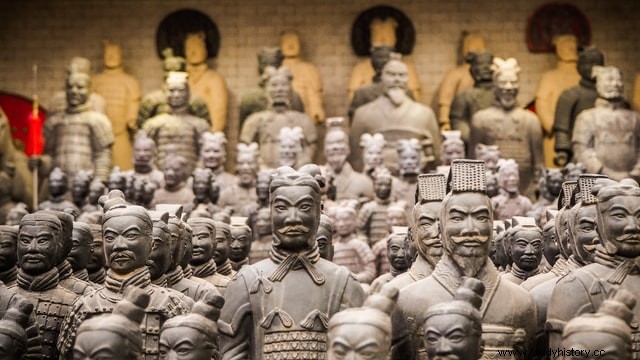
Credit:Manoj kumar kasirajan / Unsplash
The mausoleum of the first Qin emperor Xi'an is also referred to as the Qinshihuan mausoleum. It was built over a period of 38 years and was completed in 208 BC. The Qin capital, Xianyang, was divided into inner and outer cities, which is exactly what this mausoleum looks like.
It was not discovered until the 1970s when farmers wanted to dig a well. They found the complex by accident, which seems almost impossible since it extends over an area larger than the pyramids of Giza.
In the mausoleum itself, archaeologists found the so-called 'Terracotta Army'. It is an army of over 8,000 stone soldiers, 130 tanks with over 520 horses and 150 calvary horses. They stand under a dome-shaped tomb and are supposed to protect the emperor in the afterlife.
Shah-i-Zinda, Uzbekistan
The exterior of the Shah-i-Zinda ("Living King") in Uzbekistan includes mausoleums and many more ritual buildings. The construction process took over eight centuries, from the 11th to the 19th th , and the complex covers over 20 buildings.
The Shah-i-Zinda building itself is associated with a famous legend. Qutham ibn Abbas, who was the cousin of the Prophet Muhammad, the founder of Islam, is reportedly buried here. He came to Uzbekistan during the Arab invasion in 7 th century and preached Islam.
It houses the remains of many unknown people, but also several famous people, which is why some visitors come here to make a pilgrimage. Make sure you are always respectful and modest.
Mausoleum of Hadrian, Italy
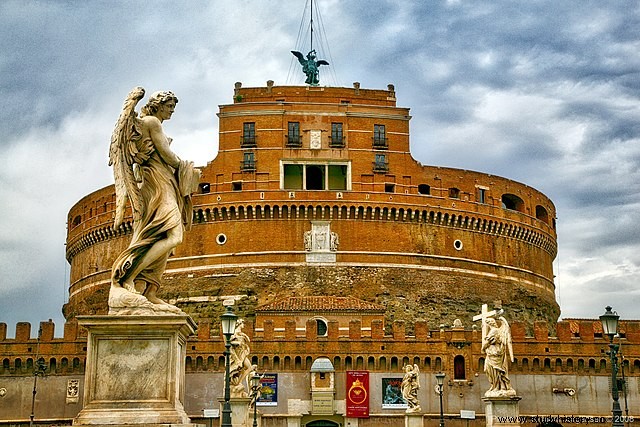
Hadrian's mausoleum, also called Hadrian's mole, in Italy was built from 117 to 138 AD. It is a tomb for the Roman emperor Hadrian. It was once the tallest building in Rome and overlooked all other architecture. His ashes were buried one year after his death along with the ashes of his wife and first son. To continue the tradition, many more remains of the following emperors were also buried.
This building has also lived second (and third) lives. It was later used as a fortress and castle by the popes. This is how it came to be known as "Castel Sant'Angelo". Today it is an art and history museum, and is open to the public.
Tomb of Jahangir, Pakistan
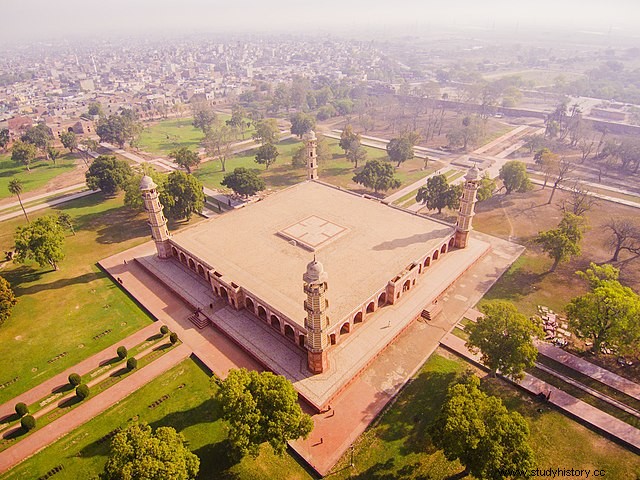
The tomb of Jahangir dates back to the 17th th century and is home to the remains of the Mughal emperor Jahangir. He ruled the Mughal Empire from 1605 to 1627 AD
It is best known for its exceptionally decorated interior with frescoes and marble, but also the richly decorated exterior with pietra dura.
Also, many surrounding gardens provide a soothing atmosphere and were a favorite spot for Jahangir and his wife Nur Jahan. Nur Jahan's mausoleum is close by, so they are not far apart, even in death.
By the way:His son, successor of the Mughal emperor, was Shah Jahan. Yes, you've read that name before. Shah Jahan was the one who ordered the construction of the Taj Mahal.
Lenin Mausoleum, Russia
The Lenin Mausoleum in Russia is located on Moscow's Red Square. Apparently to be recognized by the name, it has the remains of Soviet leader Vladimir Lenin. Lenin was the first and fundamental leader of Soviet Russia and the Soviet Union. It was during his reign that Russia (and the Soviet Union) became a socialist one-party state. He was a Marxist, but developed the communist ideology called Leninism
The mausoleum has kept his actual preserved corpse on display in a coffin since his death in 1924. They actually have an embalming team to ensure that the corpse looks as lively as possible at all times.
The Great Pyramid of Giza, Egypt
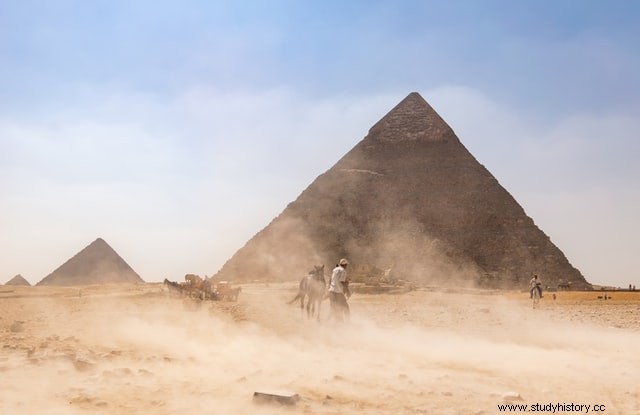
Who does not know The Great Pyramid of Giza. It's not a question, it's a fact. It is the oldest of all the seven wonders of the ancient world, and the oldest and largest of all the pyramids of Giza. It reaches up to 481 feet and was the tallest man-made structure in almost 4,000 years. No one knows how this could have been built in 2560 BC
Egyptologists conclude that the purpose was a mausoleum for the 4 th The Egyptian pharaoh Khufu dynasty. It houses three main chambers. One was cut into the bedrock, but was never finished. The Queen's and King's chamber contains the sarcophagus and is higher up.
The Mausoleum of Mao Zedong, China
Mao Zedong's mausoleum serves as Mao Zedong's final resting place. He was the Chairman of the Chinese Communist Party from 1945 until his death in 1976. Zedong was the leading political figure of the Communist Party.
Although he wanted to be cremated, his body was embalmed and is now displayed in a crystal coffin. Construction of the mausoleum began immediately after his death. You have to dress modestly and can not bring a camera.
Imam Husayn Shrine, Iraq
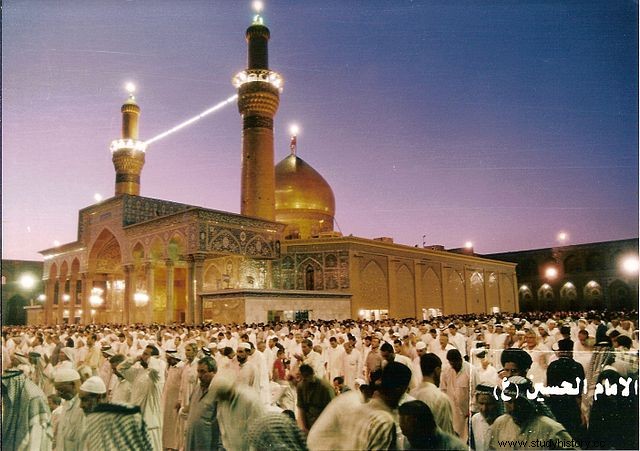
The Imam Husayn Shrine is incredibly large and colorful. The site is decorated with gold and painted tiles and amazing to look at, especially when lit at night. It is the burial place of Husayn Ibn Ali, who was the third imam of Islam, and the grandson of Muhammad. For those of you who do not know what an imam is, it is a description of the person leading prayers in a mosque. Especially for those who succeeded Muhammad as the leader of Shia Islam.
Located in Karbala, Iraq, this mausoleum is one of the holiest sites for Shia Muslims, besides Mecca and Medina. Non-Muslims are allowed to visit, but must behave in a respectful manner in relation to the religious significance of the Imam Husayn shrine.
The Mausoleum of Mohammed V, Morocco
The mausoleum of Mohammed V is located opposite the Hassan Tower in Morocco and contains the remains of the Moroccan King Mohammed and his two sons, King Hassan II and Prince Abdallah. The Vietnamese architect Cong Vo Toan designed this complex in the architecture of the modern Alaouite dynasty.
The interior is made of white marble and the exterior shows white walls with a green tile roof. Rich materials and historical crafts were used to pay homage to Mohammed V, but also to his efforts to encourage traditional crafts.
Artigas Mausoleum, Uruguay
José Gervasio Artigas Arnal was a famous politician, military general, statesman and hero of Uruguay. He fought against the Spanish Empire in the Latin American Wars of Independence, to name one of the most famous. People refer to him as the Libertador of Latin America and 'Uruguay's father'.
The Artigas Mausoleum is a monument built to praise José Artigas. It opened in 1977 and houses the remains under the statue.
Lincoln Tomb, Illinois
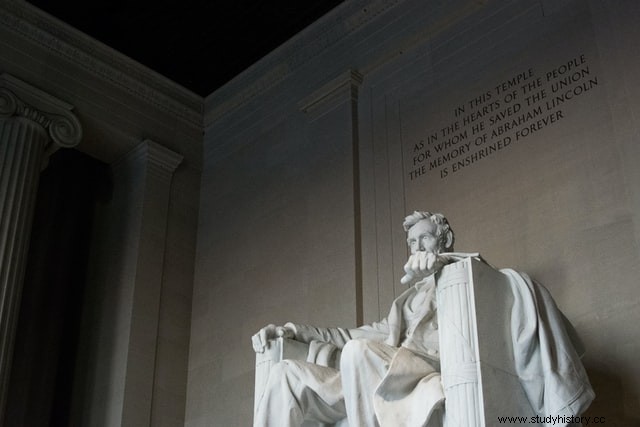
Abraham Lincoln was undeniably one of the most significant presidents in the United States. He was the first Republican president and the first to be the victim of an assassination attempt. Lincoln was an opponent of slavery, which led 11 states to establish the Confederate states in America. He successfully led the rest of the states through the Civil War and enforced the restoration of the union. Afterwards, he abolished slavery once and for all.
It was because of his work that the United States embarked on a path to becoming the modern and industrial superpower they are today and have been for many years.
The Lincoln Tomb at Oak Ridge Cemetery in Springfield, Illinois, is the final resting place of Abraham Lincoln, his wife Mary, and sons Edward, William, and Thomas. It is a granite building and has been a national historic landmark since 1960.
Royal Mausoleum of Mauretania, Algeria
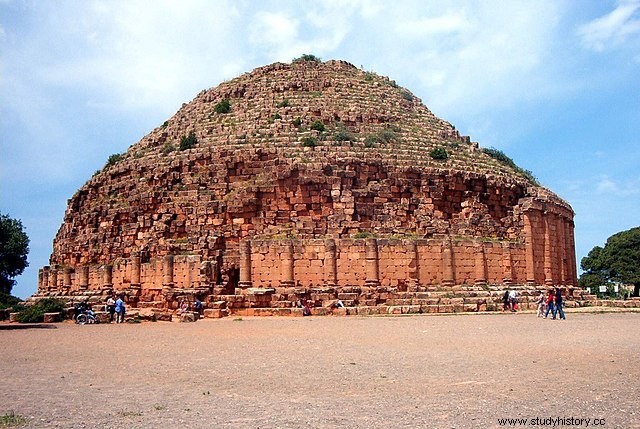
You can find The Royal Mausoleum of Mauretania on the road between Cherchell and Algiers in Algeria. It reportedly contains the remains of King Juba II and Cleopatra Selene II. They were the last king and queen of Mauritania, a tribal empire that is today Morocco.
"Apparently" is the right word to use. The actual human remains have not been found yet, but this may also be due to gravraid.
The Mausoleum of Genghis Khan, China
Genghis Khan was the founder of the Mongol Empire and came to power because he united nomadic tribes in Northeast Asia. He started the Mongol invasions, which then increased the empire westward in Poland and southward into Egypt. His campaigns caused significant geographical changes and a huge population decline. He died in 1227 and his body was buried in a secret place.
Cenotaphen (the coffin that contains no body) shows only Khan's headgear and accessories.
Bourguiba Mausoleum, Tunisia
The Bourguiba Mausoleum is located in Monastir, Tunisia. It is of great importance to the Tunisian. Habib Bourguiba is the "father of independence". He was Prime Minister and then the first President of Tunisia. During this time he led the nation of Tunisia to independence from France and was given the title "Supreme Combatant".
It was built while he was still alive and follows a modern Arabic-Muslim style. The mausoleum is flanked by two 25 meter high minarets and is topped by a golden dome surrounded by two green domes.
Pantheon, France
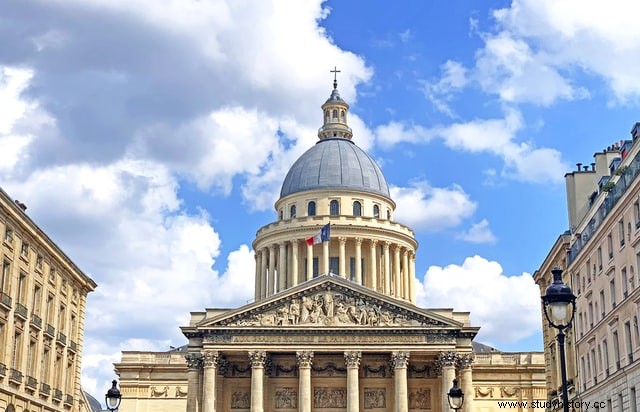
The Pantheon in Paris is a tribute to the Pantheon in Rome. Pantheon is the Greek word for temple to all the gods. You can find the Paris Pantheon in the Latin Quarter (5 th arrondissement of Paris) in the center of the Place du Panthéon.
It was originally a church, but after many changes, it now combines many liturgical functions with being a burial site. And not just any burial site. The French Pantheon houses the remains of many famous Frenchmen. Some of them include Voltaire, Rousseau, Victor Hugo and Zola.
Anitkabir, TurkeyAnitkabir is the last resting place and mausoleum of Mustafa Kemal Atatürk. He was the leader of the Turkish War of Independence and became the first president of the Republic of Turkey. His mausoleum was completed in 1953 in Ankara.
It is not only the last place for Ataturk, but also for Ismet Inönü, Turkey's second president. The mausoleum includes several towers, all of which have different meanings. For example, Freedom Tower shows an angel with a sheet of paper and a horse next to it. The angel obviously symbolizes the sanctity of freedom, which has become a Turkish reality with the piece of paper representing the Declaration of Freedom.
Saints Peter and Paul Cathedral, Russia
Peter and Paul Cathedral was the first landmark in St. Petersburg, Russia, and was built between 1712 and 1733. It is the tallest Orthodox church in the world. The tombs contain the remains of almost all Russian emperors and empresses from Peter the Great to Nicholas II. The tombs of the rulers and the families are enormously extravagant and lavishly decorated.
Image credit feature:Einar Storsul / Unsplash
